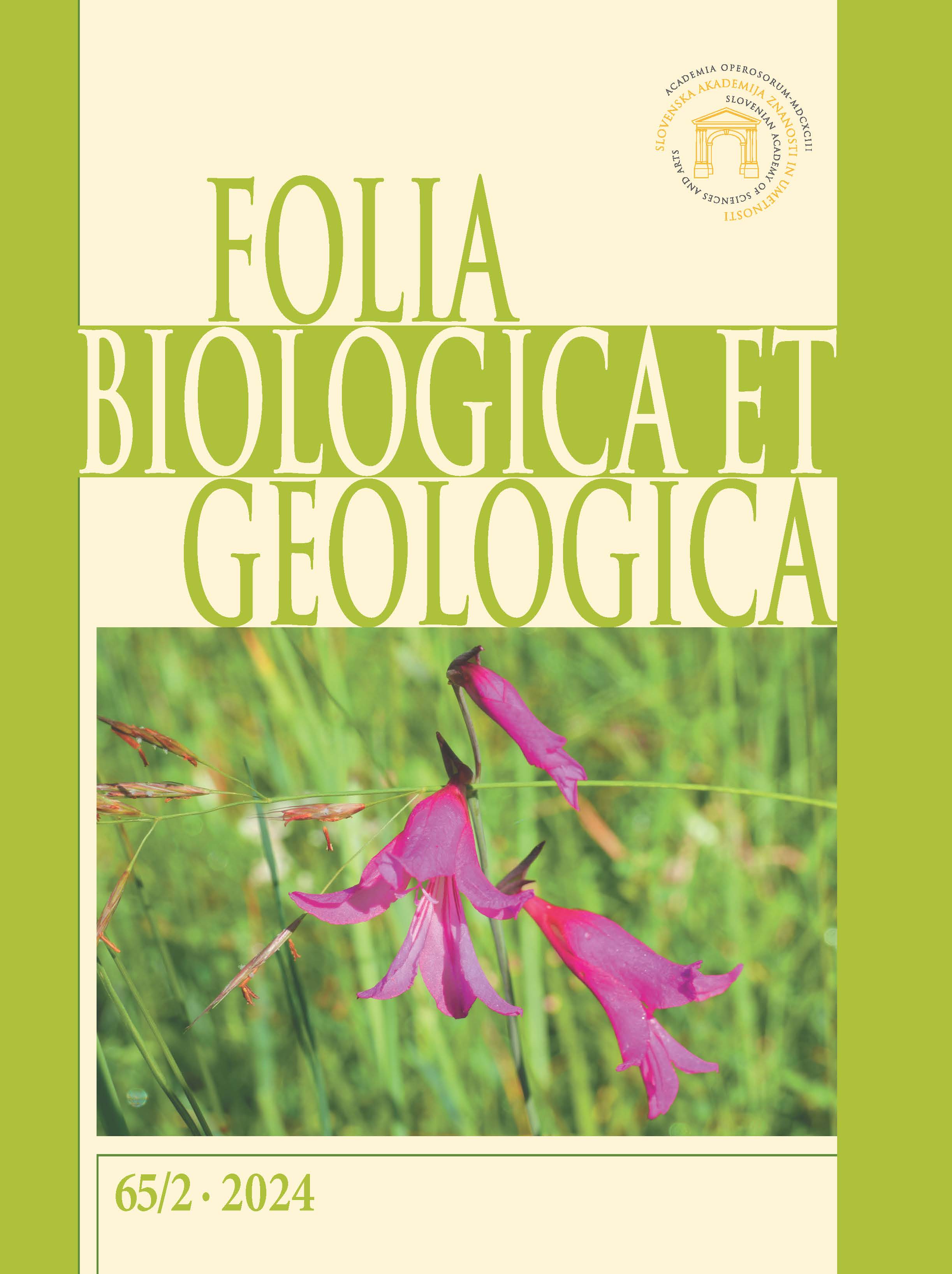Razporeditev vodnih makrofitov v dveh vodotokih kraške reke Ljubljanice, Obrh in Rak / Distribution of macrophytes in two tributaries of the karstic River Ljubljanica, Obrh and Rak
DOI:
https://doi.org/10.3986/fbg0111Keywords:
kras, makrofiti, Obrh, Rak, RCE metoda, RMI, Ljubljanica s. lat., karst, macrophytes, RCE methodAbstract
Rivers are spatially and temporally heterogeneous systems that are susceptible to changes due to anthropogenic influences. These can significantly alter water quality and river communities, including macrophytes, which are involved in nutrient cycling, energy flow and sedimentation processes, and provide habitats for other organisms. The presence, abundance, and distribution of macrophytes can thus serve as indicators of the state of aquatic ecosystems. Rivers that flow (partially) underground are particularly susceptible to (human) impacts from the hinterland due to their lower self-purification capacity. Using a modified RCE (a Riparian, Channel, and Environmental Inventory) method, we classified the Rak River as first or second RCE quality class, and the Obrh River as second or third RCE quality class. According to the River Macrophyte Index (RMI), the ecological status of both rivers was moderate, good or very good, except for the first section of the Obrh, the status of which was assessed as poor. The ecomorphological preservation of both rivers and suitable conditions for macrophyte growth contribute to the high species diversity observed in both rivers: a total of 36 taxa were recorded in the Obrh and 38 in the Rak. In the latter, the presence of Myriophyllum verticillatum L. was recorded for the first time at the time of our sampling. Almost one third of the species in each of the rivers are listed on the Slovenian Red list of threatened pteridophytes and seed plants, supporting the evidence of their high naturalness and emphasizing the importance of appropriate management of karst watercourses.
Izvleček
Reke so prostorsko in časovno heterogeni sistemi, občutljivi na spremembe zaradi antropogenih vplivov. Ti lahko odločilno spremenijo kakovost vodnega ekosistema ter rečne združbe, vključno z makrofiti, ki sodelujejo v kroženju hranil, pretoku energije in procesih sedimentacije ter nudijo življenjski prostor drugim organizmom. Prisotnost, abundanca in razporeditev makrofitov lahko zato služijo kot indikatorji stanja vodnih ekosistemov. Reke, ki (deloma) tečejo pod zemljo, so zaradi manjše samočistilne sposobnosti še posebej občutljive na (človekove) vplive iz zaledja. S pomočjo prirejene metode RCE (angl. A Riparian, Channel, and Environmental Inventory) smo reko Rak uvrstili v prvi oz. drugi RCE kakovostni razred, reko Obrh pa v drugi oz. tretji RCE kakovostni razred. Na podlagi RMI indeksa (angl. River Macrophyte Index) smo reki Rak in Obrh uvrstili v zmerno, dobro oz. zelo dobro ekološko stanje, z izjemo prvega odseka Obrha, ki smo ga uvrstili v slabo ekološko stanje. Ekomorfološka ohranjenost obeh rek ter ugodne razmere za rast makrofitov omogočajo njihovo visoko vrstno pestrost: v Obrhu smo zabeležili 36 taksonov, v Raku pa 38, pri čemer smo v slednji prvič zabeležili prisotnost vrste Myriophyllum verticillatum L. Skoraj tretjina vrst, prisotnih v vsaki izmed rek, je uvrščenih na Rdeči seznam ogroženih praprotnic in semenk, kar dokazuje visoko stopnjo njune ohranjenosti ter poudarja pomen ustreznega upravljanja kraških vodotokov.
Downloads
Published
Issue
Section
License
Copyright (c) 2024 Folia biologica et geologica

This work is licensed under a Creative Commons Attribution-ShareAlike 4.0 International License.





